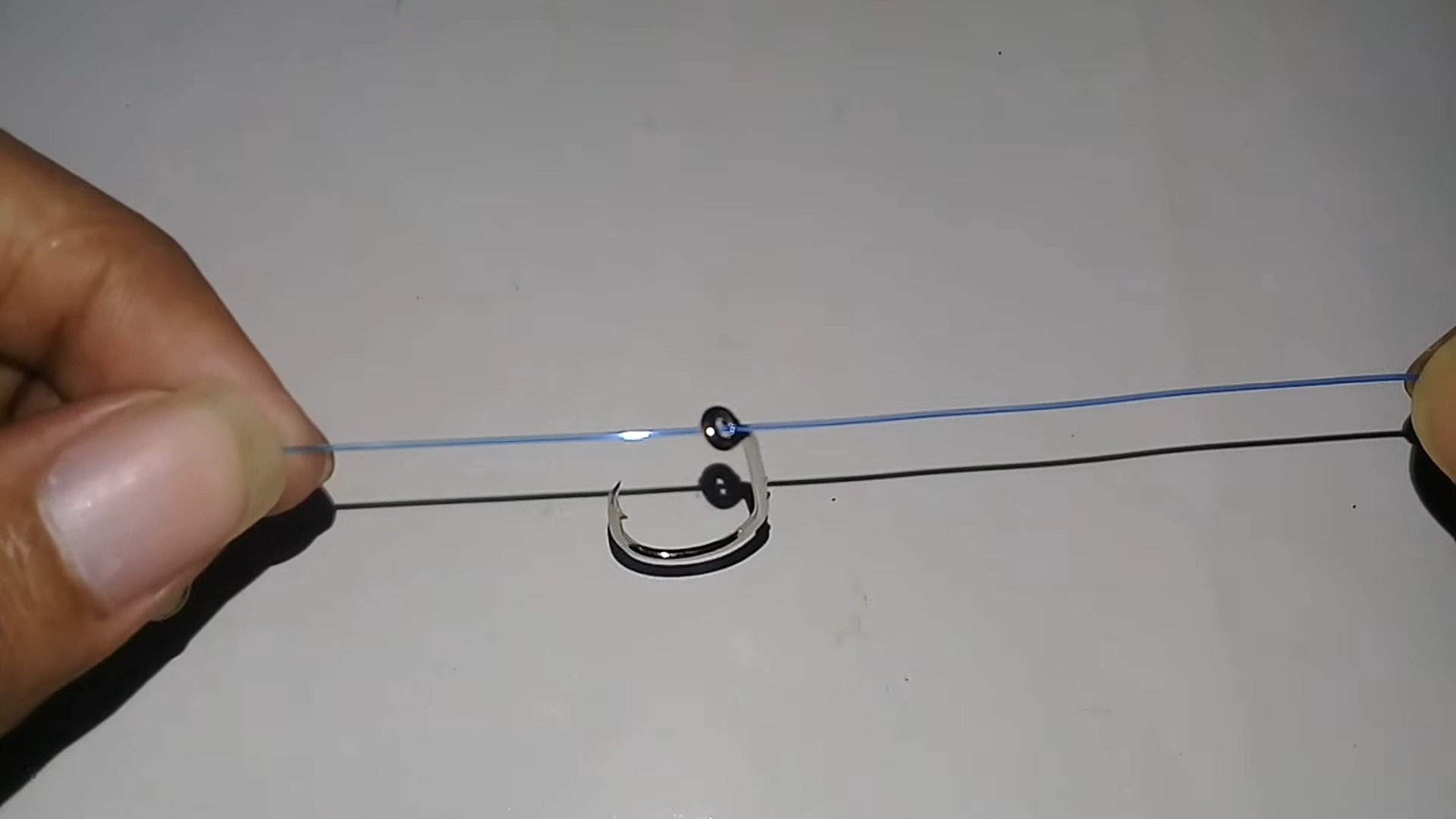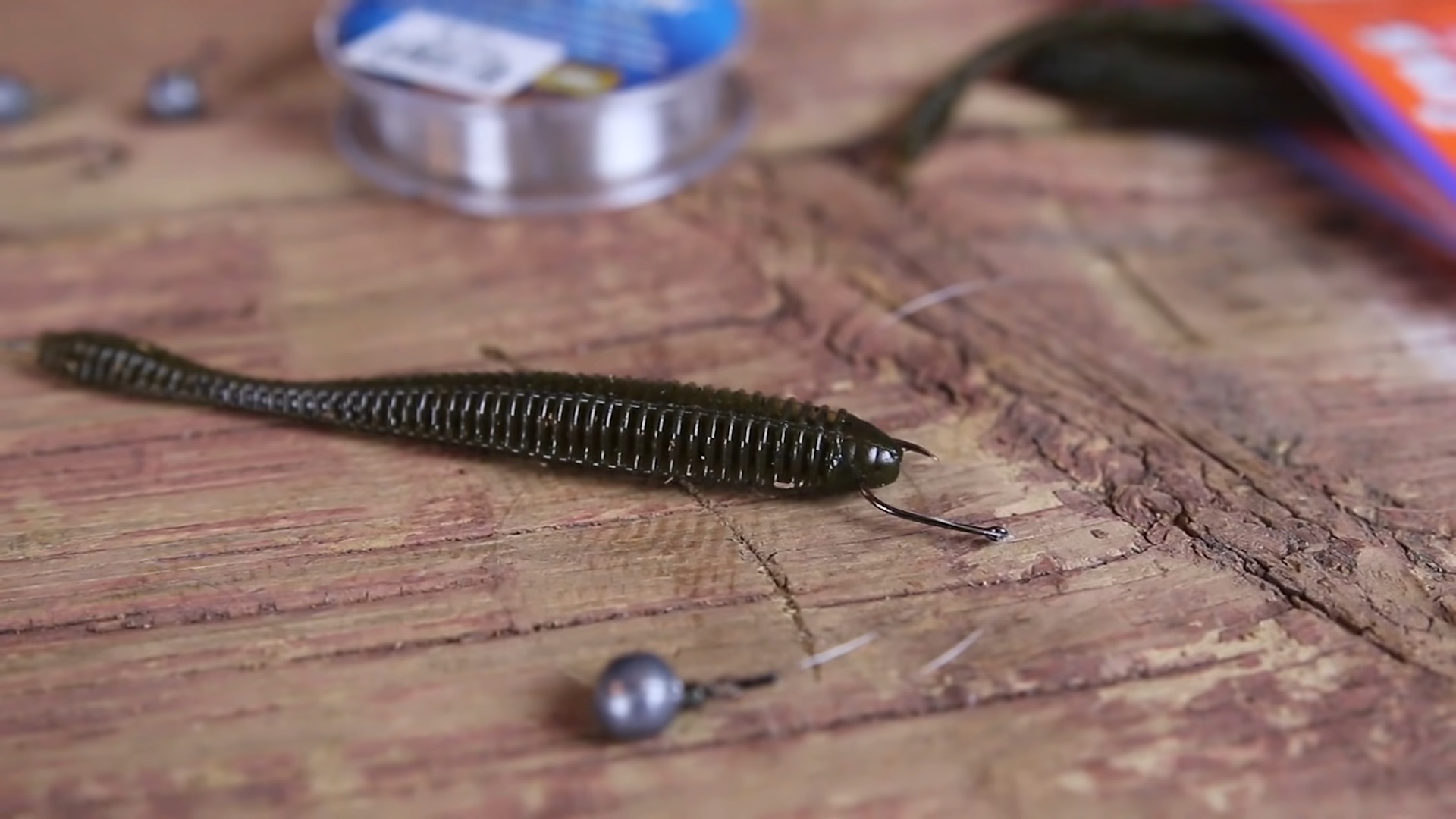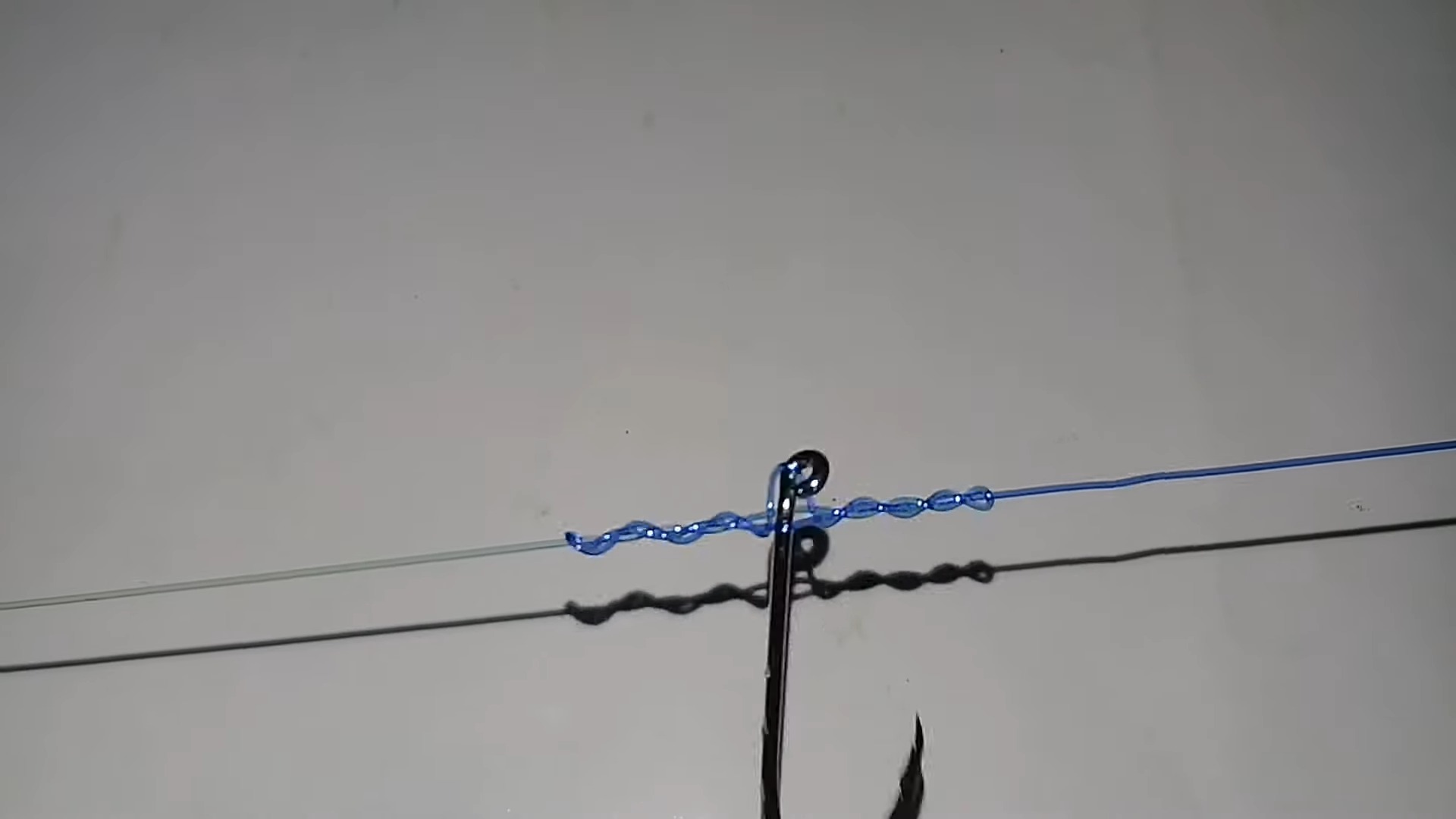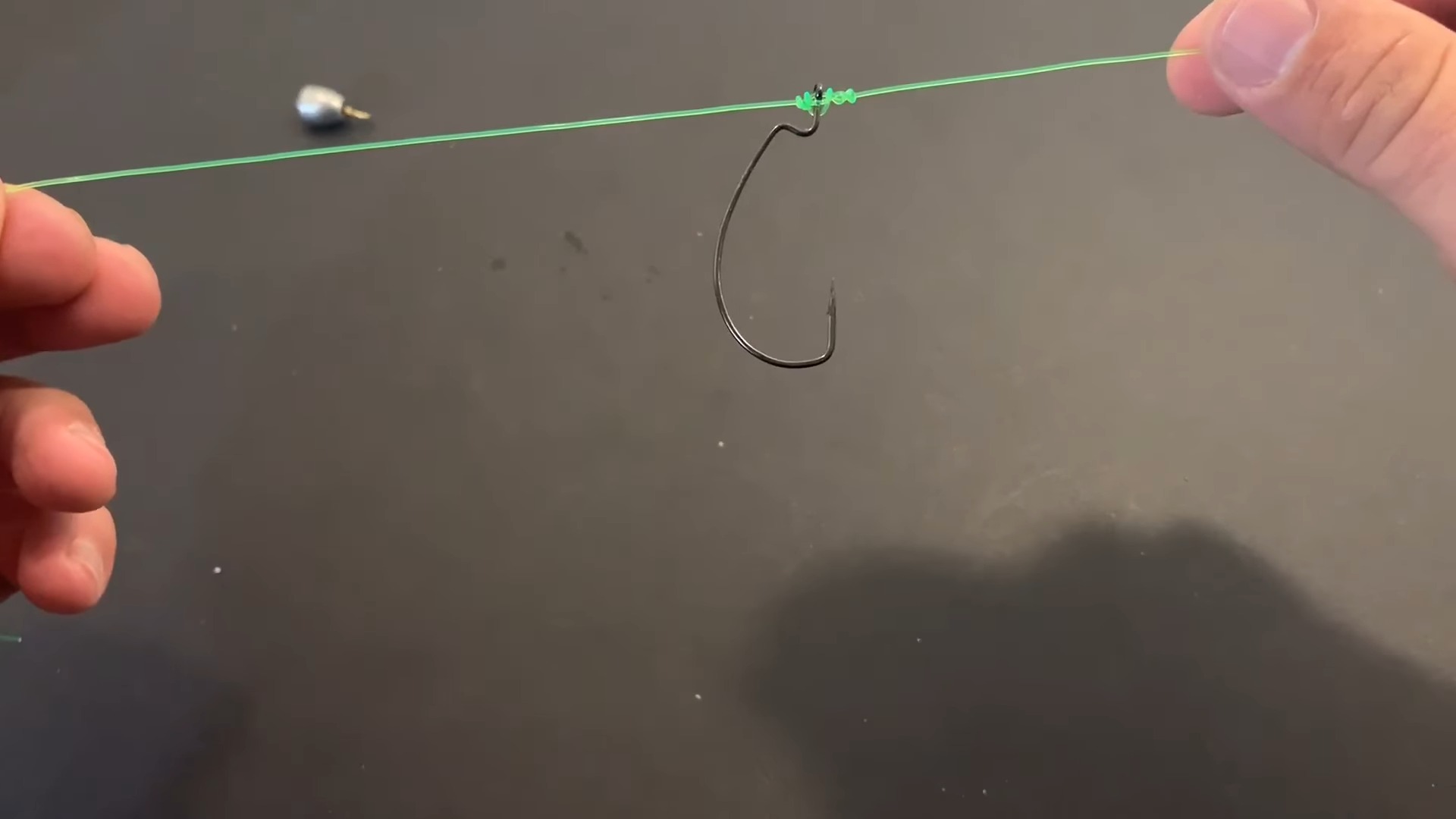There’s a serene magic to fishing that only those who’ve felt the gentle tug of a line or the thrill of a catch can truly understand. Over my many years as an angler, I’ve navigated the waters of countless techniques, tools, and tricks.
But if there’s one method that has consistently proven its worth and remained close to my heart, it’s the drop shot rig. It’s a game-changer, my friends. While it might seem simple at first glance, mastering this rig has nuances that can transform an average fishing day into an unforgettable one.
Read on, as I will talk about the art and science behind this essential fishing technique and discover why the drop shot rig is a must-have in every angler’s repertoire.
Table of Contents
ToggleWhy Use a Drop Shot Rig?
Drop shot rigs have grown increasingly popular, but why?
What Makes It Special?
The drop shot rig stands out due to its versatility. Unlike traditional bottom fishing methods, where the bait rests on the seabed, the drop shot rig suspends the bait above the bottom, allowing it to move freely in the current.
This movement mimics live prey, making it an irresistible sight for lurking fish. In clearer waters, fish can be especially finicky, inspecting bait closely before deciding to strike. The drop shot rig, by keeping the bait off the bottom and in constant motion, presents the bait in a way that feels more natural and enticing to potential prey.
Fish That Are Most Attracted to This Rig
Ideal for both freshwater and saltwater, the drop shot rig is effective for catching a variety of species. In freshwater environments, it’s great for targeting fish like bass, perch, and crappie. The rig’s subtle action is perfect for tempting these discerning fish into a bite.
In saltwater, it’s favored for species like snappers, groupers, and even flounders. The off-bottom presentation appeals to these species, drawing them out from their hiding spots and into striking range.
How Do You Tie the Perfect Drop Shot Rig?
Mastering the art of tying this rig can make a significant difference in your fishing outcomes.
Materials You Will Need
To tie a drop shot rig, you’ll need the following:
- A drop shot hook: These specialized hooks are designed to maximize the movement of your bait in the water.
- Soft plastic bait: Depending on your target fish, you might choose worms, minnows, or other shapes.
- Drop shot weight: These weights come in various shapes, but the most common are cylindrical or ball-shaped. They are designed to sink quickly while minimizing snagging.
By having the right materials at hand, you’ll be in a good position to tie an effective rig. And while there are various types of each component, starting with the basics will serve most anglers well.
Steps to Tie the Drop Shot Rig
- Thread Your Line: Begin by threading your fishing line through the eye of the drop shot hook, ensuring the hookpoint faces up.
- Tie a Palomar Knot: This is a strong and reliable knot. Make a loop with the line and pass it through the hook’s eye from the top. Then, tie a simple overhand knot. Slide the loop over the hook, and pull both ends of the line to tighten.
- Position the Weight: With the hook tied on, you’ll have a long tag end. Attach the drop shot weight to this end, ensuring it’s about 12-24 inches below the hook. This distance can be adjusted based on where the fish are in the water column.
- Attach Your Bait: Lastly, hook your soft plastic bait onto the drop shot hook. Remember, the goal is to allow as much movement as possible, so don’t bury the hook too deeply into the bait.
Now, with the rig tied, you’re ready to cast out and let the drop shot’s magic work for you.
Advanced Techniques for Drop Shot Rigging

While the basic drop shot rig is powerful, there are ways to enhance its effectiveness.
How Can You Modify It for Different Environments?
In areas with a lot of underwater structures or vegetation, using a lighter weight and a weedless hook can reduce snags. Moreover, adjusting the length between the hook and the weight can help position your bait at the precise depth where fish are feeding, based on your fish finder readings or observations.
For murky waters, consider using brightly colored baits or those that emit vibrations to attract fish. The key is to be observant and willing to adjust your rig based on the environment.
Ways to Increase the Rig’s Attractiveness to Fish
There’s always room for creativity in fishing. To enhance the allure of your drop shot rig, consider adding scent to your bait. Many anglers swear by this, especially when targeting species with a keen sense of smell.
Additionally, varying your retrieval speed and adding occasional twitches to your rod tip can make the bait’s movement more erratic, mimicking distressed prey. This can often be the difference between a curious looker and a committed striker.
What Mistakes Should You Avoid When Using a Drop Shot Rig?

As with any fishing technique, there are common pitfalls that anglers might encounter.
Preventing Line Twist
Line twist is a frequent issue with drop shot rigs, especially when using spinning reels. This twist can weaken the line and cause annoying tangles. To mitigate this:
- Use a Swivel: Incorporate a small swivel just above your hook. This allows the bait to spin freely without twisting the line.
- Casting Technique: When casting, ensure a smooth release. Jerky or abrupt casting motions can introduce twists.
- Regularly Check Your Line: Periodically stretch out your line between your fingers. This helps to identify and fix minor twists before they become major issues.
Remember, maintaining your equipment and being mindful of your actions can greatly reduce the chance of line twists.
How Can You Avoid Snags and Lost Rigs?
Snags can be frustrating, leading to lost rigs and missed opportunities. To avoid this:
- Use the Right Weight Shape: In rocky terrains, a cylindrical weight slides through easier than ball-shaped weights.
- Practice Casting: Aim to cast past your desired spot and then retrieve the rig into position. This reduces the chances of dropping your weight directly into a snaggy spot.
- Feel Your Way: As you retrieve, maintain a constant feel of the bottom. When you sense a potential snag, lift your rod tip slightly to navigate over it.
Being proactive and adapting to the underwater landscape can save you time, money, and frustration.
Ways to Develop Your Drop Shot Skills

With the basics down, continuous learning is the key to mastering the drop shot rig.
How Do You Determine the Best Bait Size and Shape?
Observation is crucial. Pay attention to the natural prey in the water. If you notice smaller baitfish, opt for a shorter, slender bait. If crustaceans are abundant, try using a soft plastic that mimics their shape. Always have a variety of baits on hand and be ready to switch if one isn’t producing results. The key is to match the hatch. This phrase, borrowed from fly fishing, means to use a bait that closely resembles the natural prey in size, shape, and color.
How Can You Master the Art of the Presentation?
It’s not just about having the rig; it’s about how you present it. Pay attention to:
- Depth Control: Use your fish finder or observation to determine the depth at which fish are feeding. Adjust your rig accordingly.
- Movement Patterns: Sometimes, a slow and steady retrieve works best. Other times, short, erratic twitches entice bites. Experiment and observe the fish’s response.
- Stay Patient: If you’re confident in your spot but aren’t getting bites, try changing your presentation before moving locations.
Perfecting your presentation requires a mix of observation, adaptability, and patience. The more you practice, the better you’ll get at reading the water and the fish.
FAQs
How long should my leader be between the hook and weight in a drop shot rig?
The length of the leader can vary depending on the depth at which fish are active. Generally, a leader of 12-24 inches is common for beginners.
However, if fish are suspended further up in the water column, a longer leader might be beneficial. It’s essential to adjust and experiment based on your observations or fish finder data.
Can I use natural bait with a drop shot rig, or is it strictly for artificial baits?
While the drop shot rig is predominantly used with soft plastic baits, natural live baits like worms, minnows, or cut bait can also be effective.
The key is ensuring the bait’s natural movement is not restricted, allowing it to attract fish effectively.
Is the drop shot rig suitable for deep-sea fishing or just shallow waters?
The drop shot rig is versatile and can be adapted for both shallow and deep-sea fishing. For deeper waters, you might need to use a heavier weight to ensure your rig reaches the desired depth and remains stable in stronger currents.
What type of fishing rod works best with a drop shot rig?
A medium-light to medium power spinning rod with a fast to extra-fast action is ideal for drop shot rigging. This allows for better sensitivity to detect subtle bites and provides the flexibility needed to work the bait effectively.
Can I use the drop shot rig in both freshwater and saltwater environments?
Absolutely! The drop shot rig can be effective in both freshwater and saltwater. However, ensure that the components you use (like hooks and weights) are suitable for the environment, especially if you’re fishing in saltwater, which can be corrosive.
Do I need a specific type of fishing line for a drop shot rig?
Fluorocarbon line is often preferred for drop shotting because of its sensitivity, abrasion resistance, and near invisibility underwater. However, if you’re on a budget, monofilament can work, though it might stretch more.
Some anglers also use a braid mainline with a fluorocarbon leader to combine the sensitivity of braid with the invisibility of fluorocarbon.
Final Words
The drop shot rig is a gem in the angler’s arsenal. Its versatility, effectiveness, and adaptability make it a favorite for many, myself included.
Whether you’re a novice angler or a seasoned pro, I urge you to give this rig a try. And remember, as with all things in fishing, patience and observation are key.
Related Posts:
- Heavy Duty Fishing: 11 Best Rods And Reels For Big Fish 2024
- 10 Best Saltwater Fishing Boats - Ultimate Angling Adventure
- 9 Best Backpacking Fishing Rods 2024 - Lightweight…
- 16 Best Kayak Fishing Paddles 2024 - Affordable Fishing Gear
- 12 Best Fishing Lures Ever 2024 - Baits That…
- 12 Best Motorized Kayak 2024 - Start Your Aquatic Adventure!












